TURTLE RESEARCH & CONSERVATION
Turtle populations have declined substantially over the past century mainly from direct take of adults and juveniles for their carapaces and meat, as well as the harvesting of eggs for consumption across the country and Southeast Asia.
Threats to these species
Habitat degradation and destruction of feeding areas (coral reef and seagrass bed) and nesting beaches (beaches and shorelines)
Direct hunt and by-catch of juveniles and adults
Poaching and unregulated harvesting of eggs.
Pollution (solid and chemical as well as light and noise pollution in nesting beaches)
Unregulated tourism
International demand and illegal trade of carapace (shell) handicrafts and jewellery
SEA TURTLES IN THE PHILIPPINES
The Philippines is home to 5 of the 7 sea turtle species in the world: Green Turtle, Hawksbill Turtle, Loggerhead Turtle, Leatherback Turtle and Olive Ridley. All species are endangered and are listed on the IUCN Red List. Turtle conservation work in the Philippines spans almost four decades.
Early conservation work and Turtle Islands Heritage Protected Area (TIHPA)
The Task Force Pawikan was created through an executive order in 1979, with the first research projects carried out by the Department of Environment and Natural Resources since the early 80’s, but it wasn’t until two decades later when full protection was officially granted to all species and included into the Wildlife Resources Conservation and Protection Act of 2001 (RA-9417).
The jewel and symbol of the conservation work done in the country is the Turtle Islands Heritage Protected Area (TIHPA) a bilaterally protected area between the Philippines and Malaysia in the southwest Sulu Sea where most work to date has focused. TIPHA is the largest nesting area in Southeast Asia, with a hundred thousand eggs laid in this small archipelago every year. Flipper tagging data shows nesters from TIHPA travel across the Philippines, and cross international boundaries. The government of the Philippines is pushing for the creation of a network of marine protected areas (MPAs) to protect known nesting sites and migratory routes within the Sulu Sulawesi Seascape, including TIHPA, El Nido-Taytay in northern Palawan, and Tubbataha Reefs Natural Park (TRNP) in central Sulu Sea.
Until recently, little work has focused on non-nesting turtles including juveniles and adults in foraging grounds, despite substantial evidence indicating nesters from other countries forage in the Philippine archipelago. Understanding their local habitat use, population ecology and demographics is one of the research priorities that LAMAVE is addressing.
OUR WORK
Working with the national and regional authorities and partners, we are providing data by conducting assessments of the status of turtle populations in the Philippines outside TIHPA, focusing on small remote nesting areas and feeding grounds, using photo-identification, telemetry, genetics, habitat assessment, tourism interactions, stranding data as well as assessing threats like bycatch, nest depredation and poaching and illegal wildlife trade. Our current research focuses mainly on three species:
Assessing by-catch and responding to stranded turtles
To further understand and be able to quantify and mitigate the direct and incidental removal of turtles from the Philippines waters, a dedicated team that is conducting a detailed assessment of the interactions between small-scale fishers and each of the marine turtle species. Read more about our work on the rapid by-catch assessment.
Most of the fisheries interactions unfortunately go unreported or undetected. Our stranding response and rescue team uses data from sick, injured and dead turtles to try to rebuild the history of each individual animal and understand the cause of death. The goal of the team is both to provide life support to stranded animals and to collected detailed data to be able to understand what can be done to prevent accidents and reduce mortality, especially when related to human activities, like fishery, various types of pollution and boat collisions.
How photo-identification is used to recognise individuals
Facial scutes used for identification.
LAMAVE is building a national database for turtles encountered in the Philippines. New photographs of turtles are compared to those in the catalogue using their facial scutes. If it does not match any of the identification photographs in the catalogue, the turtle is added as a new individual in the national database. This technique can also provide an insight into the movement of an individual turtle when it is identified in two or more locations.
OUR PROJECTS
Panglao Turtle Research and Conservation Project
After many pilot surveys in the past years, LAMAVE started a full time research project in Panglao, Bohol in December 2019.
The goal of the project is to assess the status of the turtles’ populations in the waters of Panglao and understand their origin and migration to better comprehend the role of this important foraging ground for the conservation of the species in the Philippines and South East Asia. These data will set the baseline to further understand the effect of human activities on the aggregation and to guide the coastal and tourism development towards long term sustainability.
The team works in tight collaboration with the Local Government Unit of Panglao (LGU), especially the Costal Resource Management (CRM) office and the Bantay Dagat (sea warden) team, the dive operators and the Balicasag Island Snorkel Guide Association (BISGA), without whom engagement, support and sustainability will be impossible to reach.
Our field work includes photo-identification surveys, UAV (drone) counts, focal animal follows (behavior observation), habitat assessments, satellite telemetry, genetics, tourism perception and satisfaction and tourism compliances with national and international guidelines. These are complemented by our socio-economic evaluation of the snorkel-with-turtle tourism industry, training and engagement of the snorkel guides, stranding response and rehabilitation, citizen science and awareness campaign.
KEY FINDINGS:
Updated as of February 2020- >180 individual turtles identified
- A few large sexually mature individuals
- Turtle Biology Training in Balicasag Island
- Stranding Response Training with local Stakeholders in Panglao
- Rescue and rehabilitation of several stranded turtles.
Apo Island Turtle Research and Conservation Project
Apo Island, with a local population of approximately 1000 people, was the first community managed marine protected area in the Philippines and was included into the National Integrated Protected Areas System (NIPAS) under Presidential Proclamation No. 438 in 1994. After a typhoon damaged the marine sanctuary in 2012, tourism on the island expanded to include interacting with turtles that are foraging in the shallow waters of the island.
LAMAVE began working with the local community of Apo Island, the Apo Island Snorkel Equipment Rental Gear Association (AISERGA), and the Protected Area Management Board of Apo Island Protected Landscape and Seascape in 2016.
Our goal is to understand the role of Apo Island Protected Landscape and Seascape (AIPLS) for the conservation of marine turtles - particularly green turtle in the Sulu-Sulawesi marine ecoregion.
Our initial research focused on building a local population catalogue of the green and hawksbill turtles present. We use Photo-ID to collect baseline data on the local turtle residency and abundance, use of the local habitat and identify priority foraging areas.
The identification of individual turtles allowed the team to conduct focal follow studies to investigate behavioral responses of turtles to tourist interaction as well as record compliance of tourists to local guidelines. These were complemented by over 500 interviews with local and foreign tourists, visitation data from the Protected Area Managed Board and an economic evaluation of the tourism activities.
To raise awareness on local guidelines and aid compliance, tourist management and enjoyment, LAMAVE worked with the local community, AISERGA and the Protected Area Management Board to produce a briefing and interpretation film.
KEY FINDINGS & ACHIEVMENTS
Updated as of March, 2020- Over 200 individual turtles identified
- 90% of the turtles identified were green turtles
- Using photos from local divers, we re-identified the longest resident turtle 11 years after it was first encountered
- Supported the Protected Area Managment Board to create a new set of guidelines and zoning to regulate tourism snorkeling and diving with turtles' activities.
- Apo Island Briefing & Interpretation Film
Cebu Turtle Research and Conservation Project
The waters surrounding the Island of Cebu are rich in biodiversity and incredible habitats. On its west coast is the Tañon Strait Protected Seascape, the largest protected area in the country, famous for its pods of dolphins, schools of sardines and extensive coral reefs. On the south east side, facing Cebu strait and the Bohol Sea, the coast is nourished by the Bohol Jetty - a cold current that brings rich waters from the Pacific Ocean to the Sulu Sea, making the perfect habitat for many rare and threatened species.
Our research team, based in the southern town of Oslob, has been doing weekly monitoring in many potential feeding grounds around the island, identifying many green turtle aggregations along the coast including barangay Tan-awan and Granada in Oslob and barangay Saavedra and Basdiot in the municipality of Moalboal.
The study aims to understand the size of the aggregations around Cebu, identify key habitats and prioritize conservation interventions.
Northwestern Palawan Turtle Nesting Project
The north of Palawan hosts some of the remaining nesting beaches for Olive Ridley turtles in Asia, with hundreds of nests laid every season. Community efforts to conserve these beaches have grown significantly in the last five years. However, practices throughout the area vary and have shown different degrees of short and long-term success and impact on the turtle population.
Beach development, coastal erosion, sea level rise, climate change, continuous poaching of turtle eggs, and nest depredation by stray dogs—all these factors take a significant toll on these nesting populations, impacting their survival into the future. In response to these threats, local communities and private individuals have created hatcheries across the long sandy beaches of the West Philippines Seas. However, data on the impacts of these practices—both positive and negative—are limited.
The Turtle Nesting Project will initially focus on the municipalities in the northwest of Palawan, with the main base being in San Vicente. The coastal villages of this beautiful town host 284km of white beaches and small coves. Every year from mid-November to March, Olive Ridley turtles lay hundreds of nests at night along these beaches.
LAMAVE is supporting and amplifying the impact and work of the local POs and stakeholders, bringing people together, providing technical knowledge and expertise and providing opportunities for enhancing local capacity and professionalizing local teams and eco-tourism guides.
Citizen Science
A citizen scientist is a member of the public that contributes to scientific research. By engaging the public, especially the diving and freediving communities, we are able to gain a more complete understanding of turtle populations here in the Philippines than we would from our research sites alone. Submissions of turtle photographs from the general public are run against our national catalogue, allowing us to compare the unique scute pattern on an individual turtle’s head.
Citizen science is particularly valuable to cover large areas and, through personal photographic archives, be able to go back in time, and track the movement and presence of individual animals across space and time. It can also help examine life history parameters like growth, sexual maturity and reproduction.
A photo is worth a million words and many, many hours of dedicated survey effort.
Key sites of interest: El Nido, San Vincente, Puerto Princesa, Tubbataha Reefs Natural Park, Taytay (Palawan); Panglao, Anda (Bohol); Dauin, Apo Island (Negros Oriental); Apo Reef Natural Park and Pandan Island (Mindoro); Moalboal, Olango Island, Mactan Island, Oslob, Daanbantayan (Cebu); Sogod Bay (Southern Leyte); Anilao (Batangas); Misamis Oriental and Occidental; and Siargao and Dinagat (Surigao Del Norte).
KEY FINDINGS:
Updated as of March, 2020- Reports of turtles from 22 research sites
- +1100 individual turtles in the national database
- +20,000 encounters with turtles reported from LAMAVE research and Citizen Science
National Catalogue
A key component of our research is building and managing the national photo-identification catalog for each turtle species, to understand population and movement trends. This is being achieved through dedicated photo identification by our team, data collected by Department of Environment and Natural Resources (DENR) personnel as well as citizen science submissions from the public.
OUR IMPACT
Impact & Output
2 scientific publications
>1,100 individual turtles identified
Preliminary Training of > 100 turtle snorkel guides from ASIERGA and BISGA
Deployed satellite tags on 3 adult turtles, to track their movements.
Assisted the Protected Area Management Board in updating tourism guidelines based on research findings.
Updated April 2020
Infographics
Publications
Using minimally invasive techniques to determine green sea turtle Chelonia mydas life-history parameters. Araujo, G., Montgomery, J., Pahang, K., Labaja, J., Murray, R., Ponzo, A.; Journal of Experimental Marine Biology and Ecology, 2016
In-water methods reveal population dynamics of a green turtle Chelonia mydas foraging aggregation in the Philippines. Araujo, G., Legaspi, C.G.M., Freber, S., Murray, R., Burdett, K., Grundy, S., Labaja, J., Snow, S., Yaptinchay, A., Ponzo, A. Inter Research Science, 2019
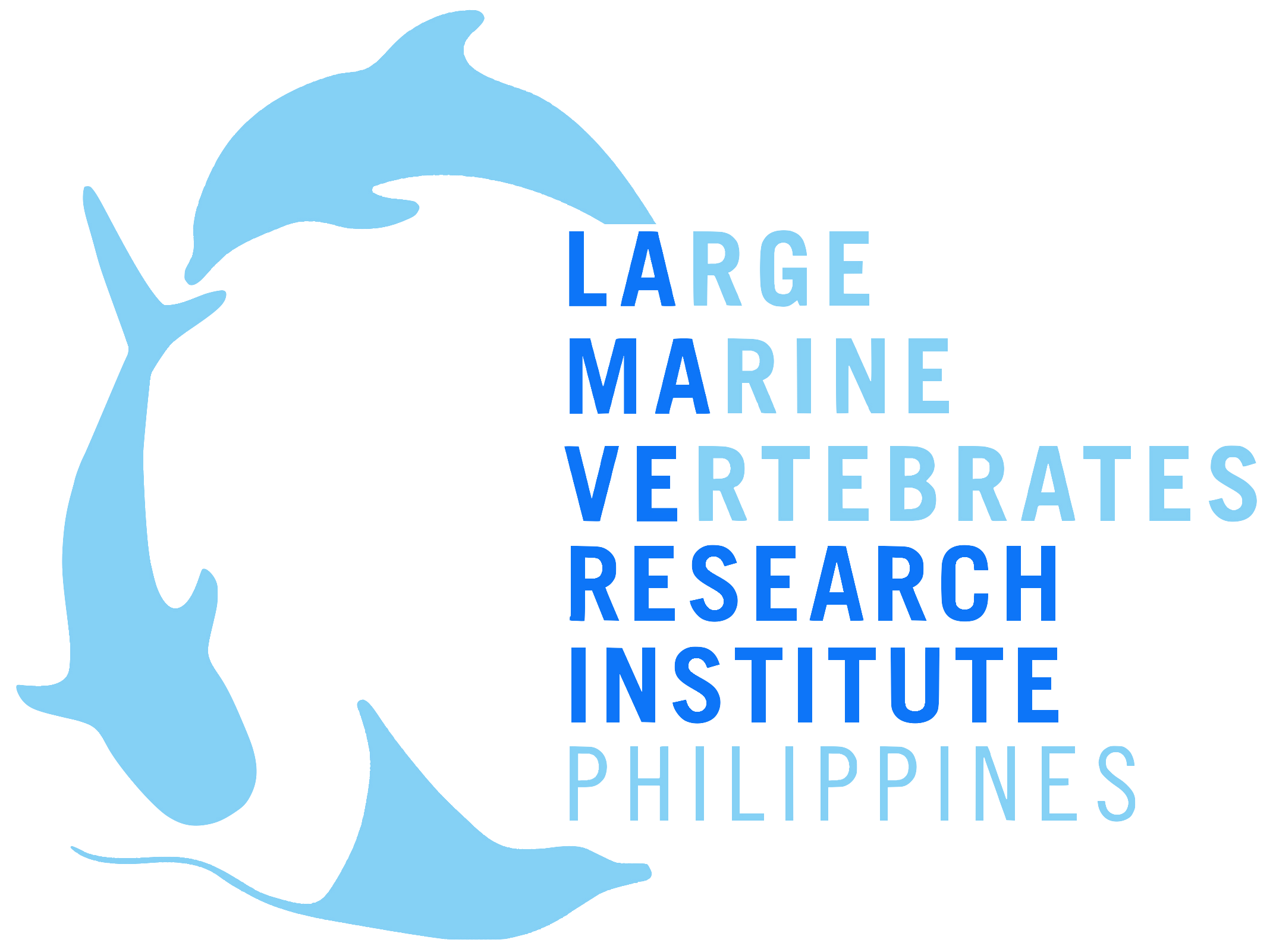
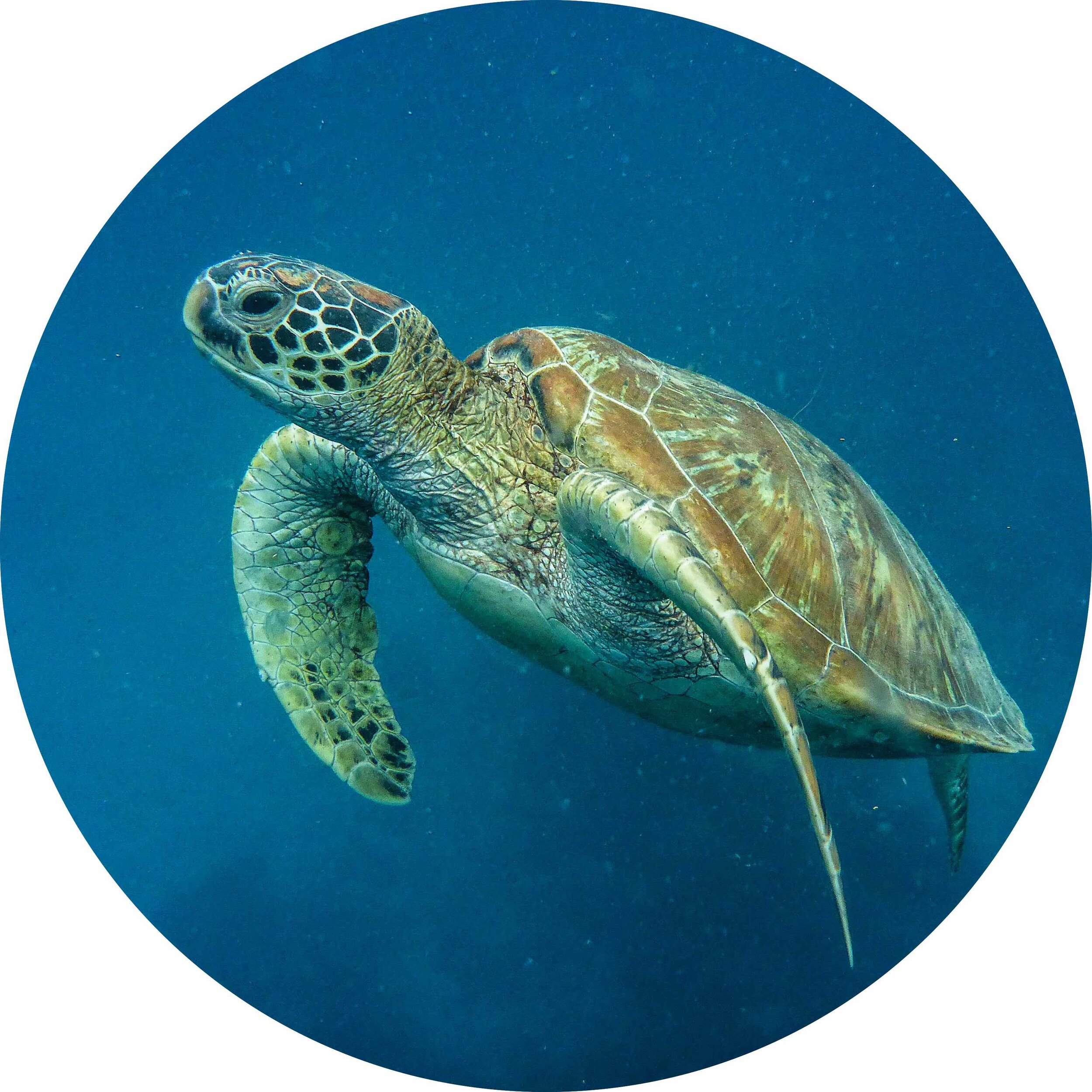
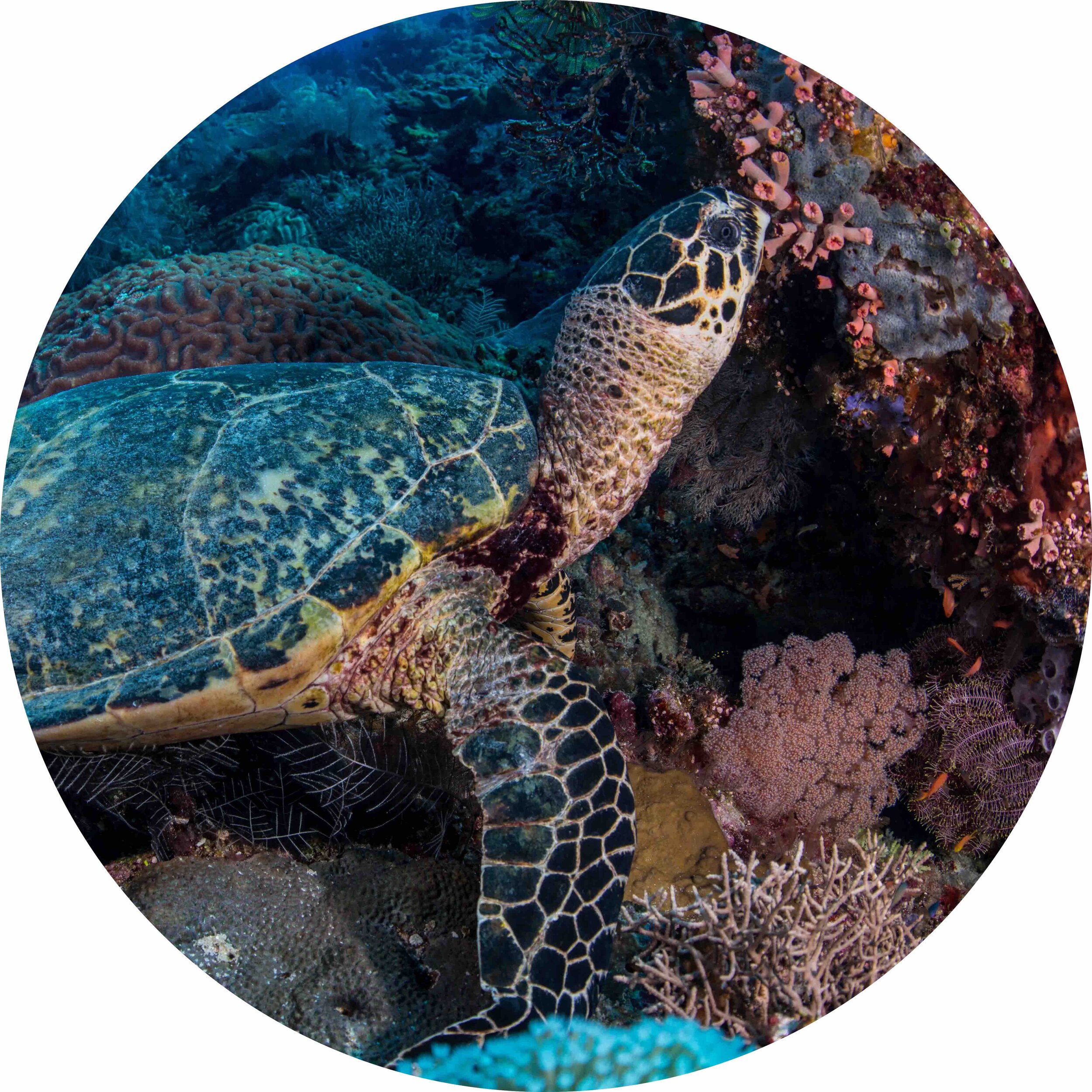
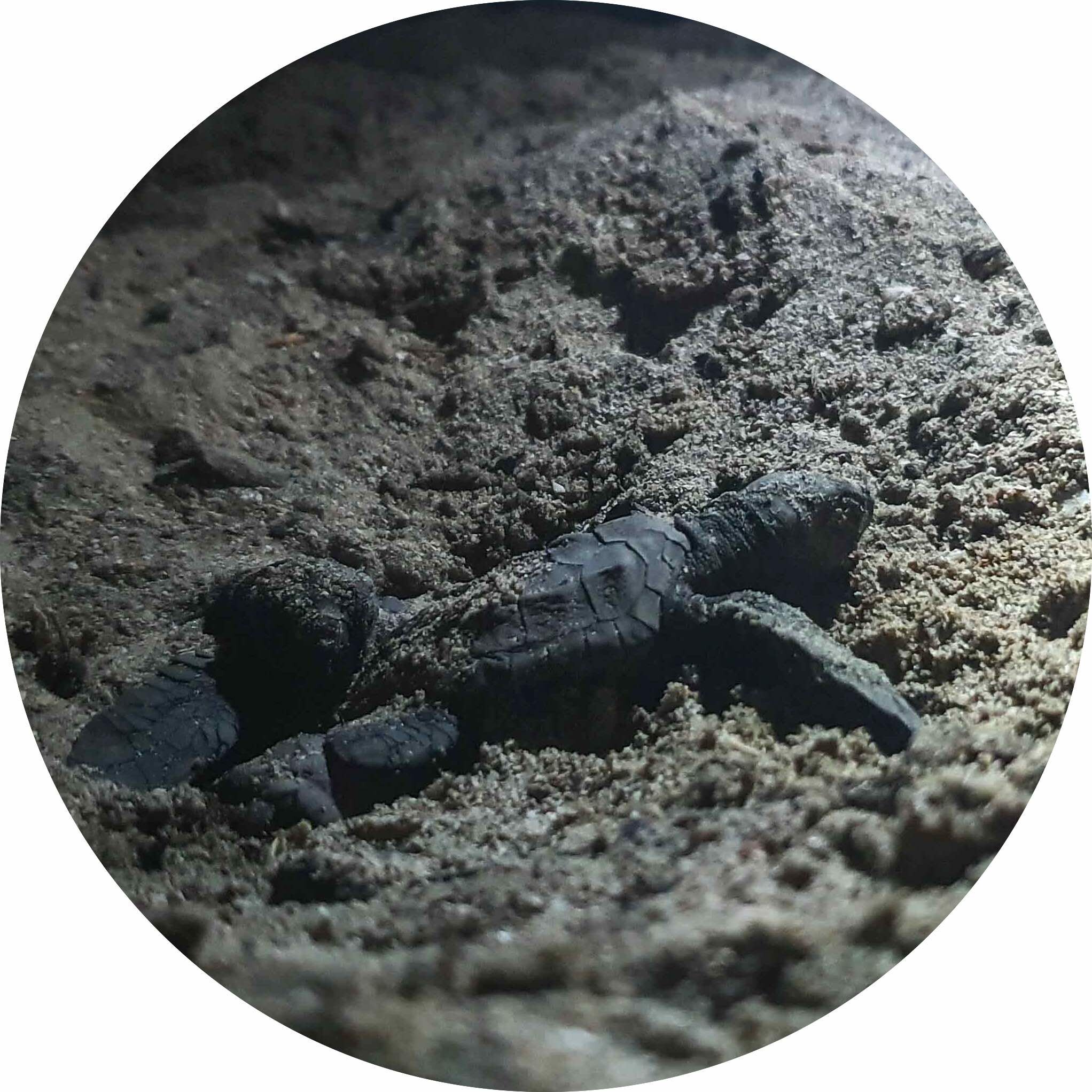


















































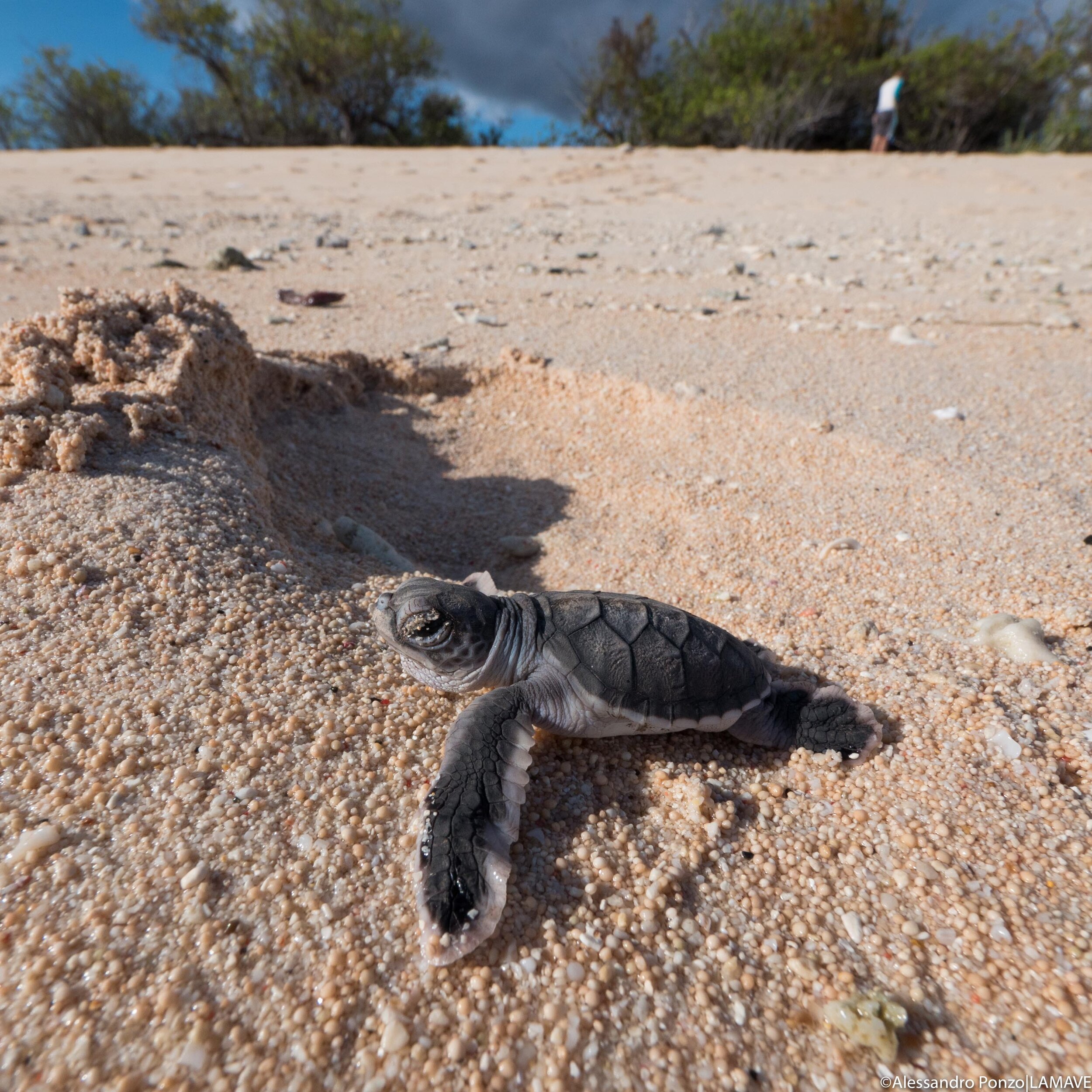









How lasers and photographs are helping scientists study endangered turtles in the Philippines
One of the challenges for conservation biologists is how to collect information in the most minimally invasive way they can to minimise disturbance. A recent study by Large Marine Vertebrates Research Institute Philippines used cameras and lasers to study population and growth rates of green turtles from a distance…